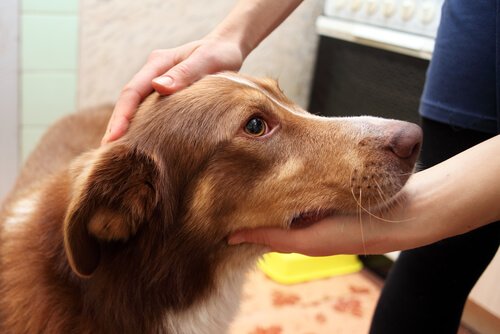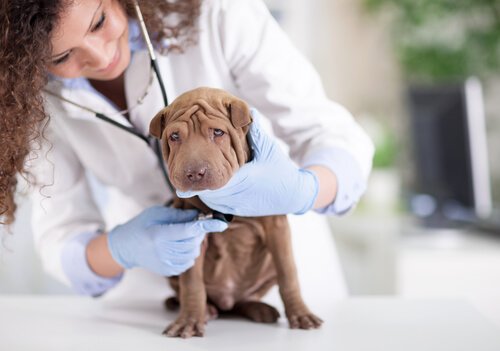What to Do If Your Dog Has a Seizure

If you find yourself in a situation where your dog has a seizure, the first thing you need to do is to stay calm. Firstly, lie your dog on the floor and try to prevent his tongue from falling out. Let him recover, and then give him the treatment prescribed by your vet.
Some breeds have a high risk of seizures

Epileptic seizures are actually more common in certain breeds than others. The German Shepherd, Saint Bernard, Setter, Beagle, Poodle, some Daschunds, and the Basset Hound all have a high risk of epilepsy.
The first seizure often occurs between the ages of 6 months and 5 years old and it’s really important to know how to react. Epilepsy isn’t fatal or deadly, but it can be very serious for your dog.
Important steps when your dog has a seizure
Idiopathic epilepsy in dogs is a neurological disorder with similar symptoms to the same illness suffered by people. When a seizure occurs randomly and unexpectedly, energy is discharged in the brain.
This causes leg movements, excessive salivation, uncontrolled urination, and defecation, as well as a loss of consciousness. It’s really important to be prepared.
The first thing you must do is stay calm. Make sure your dog is in a place where he won’t hit any nearby objects or fall onto a lower surface.
Be very careful – this is a very delicate situation. Ideally, make sure he’s on a soft surface, like a mat or some cushions, to stop him from injuring himself.
Some people advise letting your dog’s tongue hang out so that he can get more oxygen. However, common sense says that if his tongue is hanging out, he’s more likely to bite it.
Once the seizure is over, you should let your dog rest in a quiet place. He will be completely wiped out.
A vet will prescribe the correct treatment when convenient, which may be a muscle relaxant, such as Valium, which needs to be applied rectally. You’ll then be able to administer this when your dog has an epileptic seizure.
Epileptic dogs and seizures
Epileptic seizures can be of varying intensity and there are some things that you can look out for as a sign of an imminent seizure. For example, your dog may seem much more nervous or restless than normal.
If you anticipate an attack, you can start with the first steps. These are to make sure your dog is in a safe space and to lay him down on a soft surface on the floor.
How long do seizures last?
Although for you a seizure will seem to last for an eternity, in reality, they don’t last more than a couple of minutes. However, afterward, your dog will be very disoriented and tired.
Idiopathic epilepsy in dogs is incurable and your dog will probably require treatment for the rest of his life.
It’s not detectable through analysis or scans either. It doesn’t normally require urgent treatment, unless the attacks are very frequent. In this case, they can be dangerous for your dog and you’ll need to administer a barbiturate-based treatment.
Although it’s hard to believe, your dog won’t suffer during the seizure.
Useful tips when your dog has a seizure

If you notice any symptoms, you should go straight to your vet. Follow his/her instructions and prescription to the letter to keep your dog’s symptoms to a minimum.
Epileptic seizures are actually a symptom of a neurological disorder in just the same way that diarrhea is a symptom of a problem with the digestive system. It’s often possible to determine an exact condition which is causing the seizures.
This could be a tumor, a congenital defect, or a brain hemorrhage. Other times it’s not possible to establish the cause, and this is known as idiopathic epilepsy.
If a vet calls a condition ‘idiopathic’, it normally indicates that the origin of the condition is unknown.
All cited sources were thoroughly reviewed by our team to ensure their quality, reliability, currency, and validity. The bibliography of this article was considered reliable and of academic or scientific accuracy.
- Thomas, W. B. (2010). Idiopathic Epilepsy in Dogs and Cats. Veterinary Clinics of North America – Small Animal Practice. https://doi.org/10.1016/j.cvsm.2009.09.004
